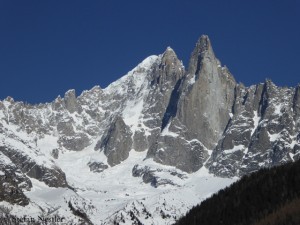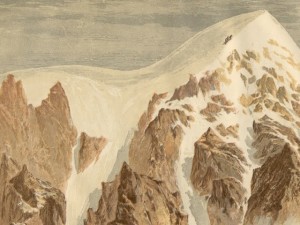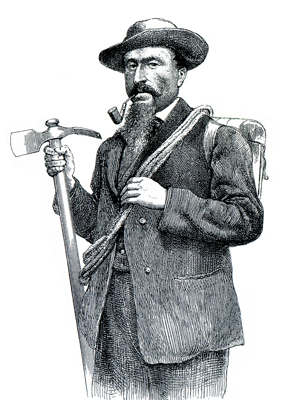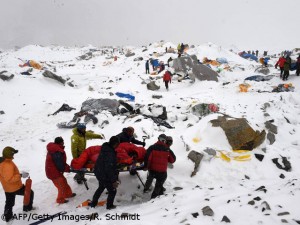150 years ago: First ascent of the Aiguille Verte
If there really is such a thing as a “Golden Year” of climbing in the Alps, it was 1865: More than sixty important first ascents were made on the highest mountains of France, Switzerland and Austria. The most spectacular was certainly that of the Matterhorn on 14 July. But Jungfrau, Wetterhorn, Breithorn, Ortler and Piz Buin were also first climbed in 1865 – and the Aiguille Verte, today exactly 150 years ago. On 29 June 1865, just after 10 a.m., the Briton Edward Whymper, the Swiss mountain guide Christian Almer from Grindelwald and his colleague Franz Biner from Zermatt reached the 4122-meter-high summit in the Mont Blanc range. The first ascent of the “Green Needle” was one of the most coveted alpine goals of those days.
Insider tip: From Southeast
“We arrived three quarters of an hour before the time we had told them, when below, to look up”, Whymper wrote later. “Probably, at the moment no one was looking, as they had not the slightest belief that we should succeed better than our predecessors. This did not trouble us much.” The trio’s secret to success was to ascend on the southeastern slopes of the mountain, facing away Chamonix. “It is somewhat surprising that scarcely any one made a serious attempt to ascend from that direction”, Whymper was astonished.
First ascents in a row
On 16 June, just about two weeks earlier, the three mountaineers, along with the French mountain guide Michel Croz from Chamonix, had already first climbed the 3962-meter-high Grand Cornier in Valais. On 24 June, this roped party reached, for the first time too, a 4184-meter-high minor summit (Pointe Whymper) of the Grandes Jorasses. The main summit (Pointe Walker), which is 24 meters higher, was first climbed three years later.
Course insults
The local guide Croz, with whom Whymper was regularly climbing, was unable to join the first ascent of the Aiguille Verte, because he had to wait for a client in Chamonix. An outcry went through the local guides, when they heard that a British mountaineer, guided by two Swiss, had managed to scale the coveted mountain. Whymper and Co. were subjected to course insults. The guides of Chamonix were questioning the summit success. One of the ringleaders was even arrested.
The dust settled, when Michel Croz made the second ascent of the Aiguille Verte on 5 July 1865, on a new challenging route, the Moine Ridge. Croz guided among others the Englishman Charles Hudson. Nine days later, both were also among the first ascenders of the Matterhorn, but did not survive the coup. More about this later.










